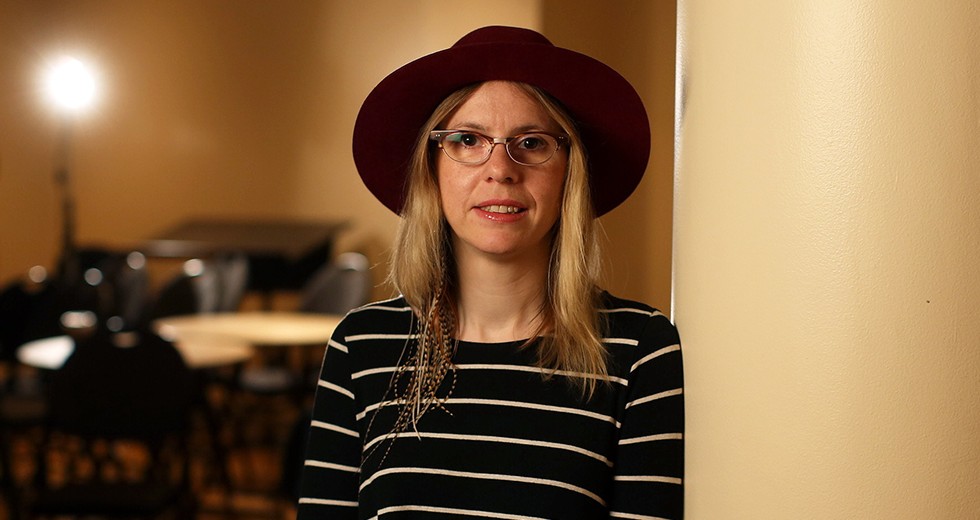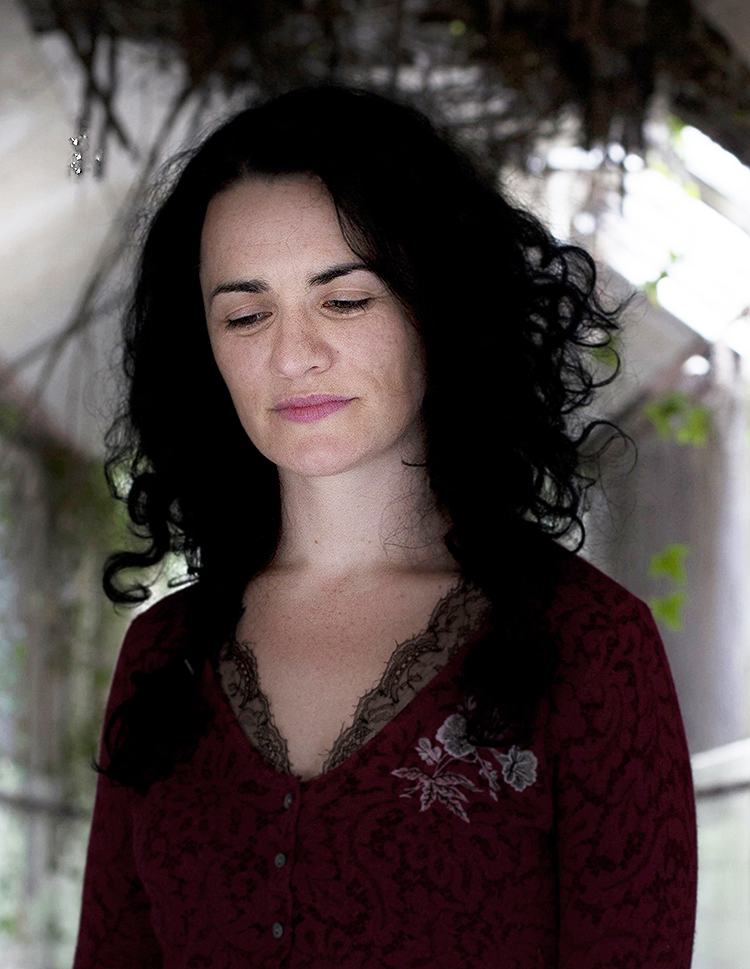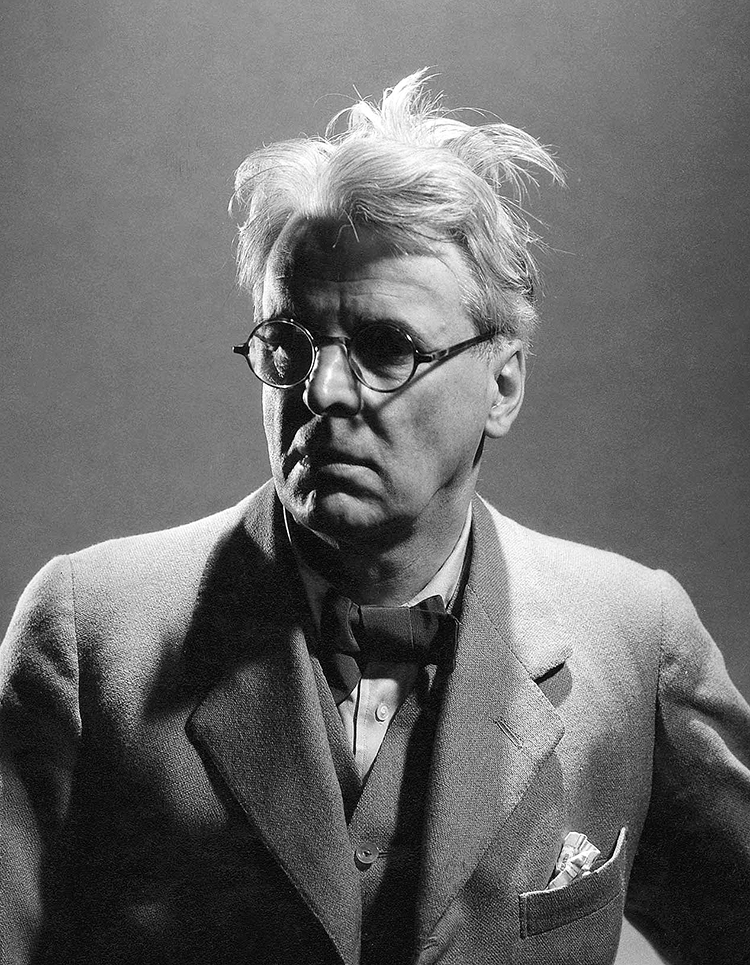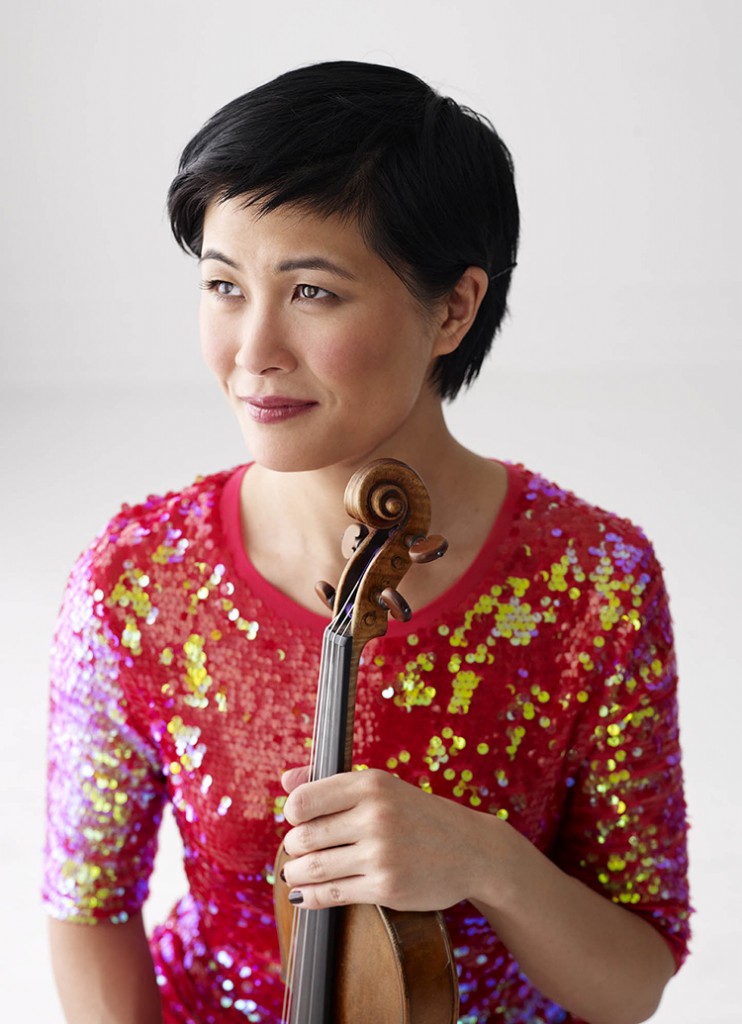
Earth, receive an honoured guest;
William Yeats is laid to rest:
Let the Irish vessel lie
Emptied of its poetry.
– From “In Memory of W.B. Yeats” (1939), by W.H. Auden
Anna Clyne, not content to let the Irish vessel lie, samples of its poetry, digitally, using Avid Pro Tools on her laptop.
“It’s an experiment for me,” says Clyne, the Chicago Symphony Orchestra’s Mead co-composer-in-residence, ahead of the world premiere of The Seamstress for violin and orchestra, which was inspired by William Butler Yeats’ poetry and commissioned by the CSO. Ludovic Morlot conducts CSO performances May 28 and 30 and June 2 (an Afterworks Masterworks concert) with Jennifer Koh as soloist.
Yeats’ stanza “A Coat,” from 1914, gives The Seamstress its “brushstroke of an idea, with no absolute …” says the composer, as her voice trails off.
The poem opens with “I made my song a coat/Covered with embroideries/Out of old mythologies” — a simple image, easily grasped. Clyne, however, teases, the poem “will never be heard in its entirety.” Instead she’s after a “combination of the sound and the meaning” that’s got her booting up and Skyping Cork.

Composer Irene Buckley recited and recorded Yeats’ poem “A Coat” for The Seamstress. | Photo: Clare Keogh
“There’s something about the Irish accent that I love,” says Clyne, who invited friend and emerging composer Irene Buckley to record Yeats’ poem. “She has a very beautiful spoken voice, and also has that Cork accent — so lyrical.”
(Buckley’s take on Yeats seems to return Clyne’s compliment. “For me, this poem is about authenticity and not being afraid to be open. By staying true to oneself, one will always remain original,” writes the Cork-based composer.)
In The Seamstress “the laptop part is snippets of [Buckley], either whispering or talking the text, not in a very obvious way.” To evoke her vessel’s verse, Clyne uses Avid Pro Tools, the mixing and composing software responsible for Ricky Martin’s 1999 chart-topper “Livin’ La Vida Loca,” and seemingly every hit pop song since.
“Often it’s manipulated or distorted in some different form,” Clyne says. “It’s the first time I’ve really explored using pre-recorded material in an orchestra setting, so I’m going to have to play around with it when we get to rehearsals and see how that goes.”
Yeats’ Irish lyricism has a surprising Chicago genesis. In May 1914, “A Coat” was first published Stateside, a coup for local upstart Poetry magazine, weeks before the poem’s publication in Churchtown, near Dublin. “It’s actually a poem that I’ve known for many years,” Clyne says. “It’s always sort of floated in the back of my imagination as something that I’d like to use.”
Born in London to a mum with Irish roots, Clyne, an aspiring if persevering cellist, shipped north to live la vida loca in Edinburgh’s “underground taverns with live music and beer and much festivity.” She discovered similar excitement in Chicago’s “really vibrant street-music scene,” moving here five summers ago.
Like Yeats’ verses, the violin tune opening The Seamstress has Chicago origins, too. “I was actually taking beginner fiddle classes at the Old Town School of Folk Music,” says Clyne, who graduated to Irish fiddle lessons at the Lincoln Avenue venue. “Being in Chicago very much influenced the kernel of the idea for this piece.”
“I like the idea of writing a concerto that opens with something that’s very tangible,” Clyne says. “I tried many different beginnings before I found the eventual beginning, which actually turned out to be a very, very simple tune that I just played, playing around with my ideas on the fiddle. There’s something about it that felt very genuine, and sort of stripped to the bones.”
Just as Clyne unravels the mythologies of Yeats’ embroidered “Coat” into lyrical manipulations and distortions, violinist Jennifer Koh’s virtuosity invites music that “spirals into a series of five tales that range from love to despair, and that combine memory with fantasy,” the composer observes in the work’s program notes. Simple verses and tunes are Clyne’s departure points for The Seamstress’ single-movement “journey to different sound worlds throughout the piece.”
Clyne’s past work with Koh, and extended CSO residency, make for “a much more intimate process of composing,” she says. “I’ve really had a chance to get to know the individual characters of the musicians, both as people and as instrumentalists. I’m very excited. It’s a great opportunity to be collaborating and working with the Chicago Symphony Orchestra again.”
It’s curious that The Seamstress, as the composer hints, evokes the singular image of “a lady alone with her craft.” Because Clyne’s inviting, inclusive creativity — a spirited mix of Brit and Irish inspiration, Scottish perseverance and Chicago collaboration — makes solitude morph, distort and eventually unravel.
Andrew Huckman is a Chicago-based lawyer and writer.

